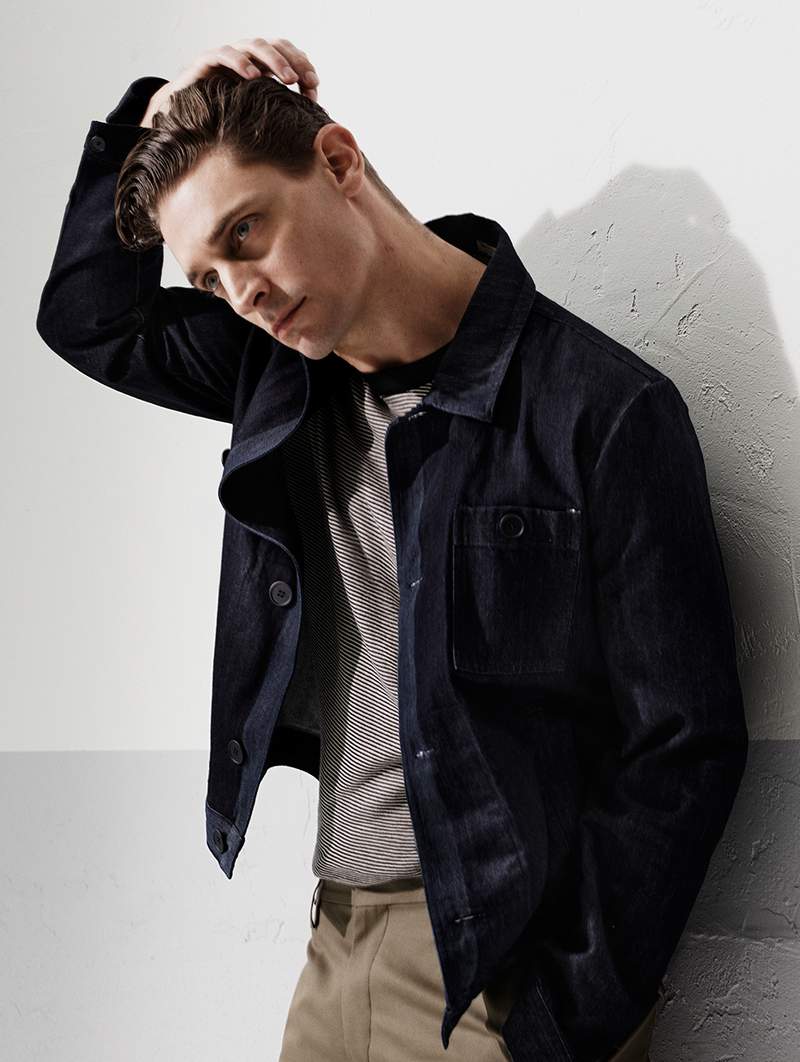THE JOURNAL

Choreographer Mr Cameron McMillan shows us the way to rock the 1950s look today.
Given that the teenager has played such a central role in shaping Western culture over the years, it might come as a surprise that it wasn’t until the 1940s that the word – back then, hyphenated as teen-ager – first appeared in print. As a 1941 issue of LIFE magazine breathlessly declared, with all the giddy excitement of a biologist who has just discovered a new species of tree frog, “they [teenagers] live in a Jolly World of Gangs, Games, Movies and Music. They speak a curious lingo, adore chocolate milkshakes, wear moccasins everywhere and drive like bats out of hell.”


It would take another decade for the teenager to properly emerge as a cultural force in the US, and by that point it was a different – and far less benign – image that dominated the popular imagination. Mr Marlon Brando in The Wild One (1953), Mr James Dean in Rebel Without A Cause (1955) and Holden Caulfield, the protagonist in Mr JD Salinger’s 1951 novel Catcher In The Rye, all contributed to the perception of teenagers as troublemakers and delinquents. Meanwhile, a new crop of rock ’n’ roll stars, led by a fresh-faced and loose-hipped Mr Elvis Presley, scandalised the establishment with their provocative performances, prompting none other than Mr Frank Sinatra to describe the genre as “brutal, ugly, degenerate and vicious”.


This fearful, suspicious attitude towards emergent teen culture was perhaps the first modern acknowledgement of something we now accept as quite natural: that each new generation of adolescents will seek, as if by instinct, to define itself against what came before. Teenage rebellion is nothing new, but the generation that came of age during the American post-war economic boom of the 1950s was free to express itself and rebel like none before it. And where did these rebels find their ultimate cause? In the way they chose to dress.

Just as rock ’n’ roll music, Beat poetry and abstract-expressionist art seemed to thunder against the starchy, buttoned-up conventionality of the decade, so, in its own way, did men’s fashion. Cuts became looser, collar shapes more relaxed and elements of sportswear, workwear and military uniform began to find their way into the casual wardrobe. A glance at what was contemporary in menswear at the time – flat-fronted khakis, Perfecto leather jackets, Ray-Ban Wayfarers, Hawaiian shirts and penny loafers – reveals an era that was perhaps more exciting, more groundbreaking and more relevant to the modern day than is generally assumed.


In American high schools – which were still, at that point, a relatively recent invention, having only been popularised in the first half of the 20th century – the cliques and gangs that continue to underpin our preconceptions of youth culture began to coalesce. The jocks, geeks and rockers memorialised in films such as Grease, American Graffiti and Back To The Future can still be seen, albeit in caricature, in modern films including the High School Musical series.

It’s tempting to see the 1950s as the point of origin for much of what we now understand as youth fashion. For that reason alone, the decade will continue to be of relevance to modern menswear designers, and its characteristic look, as demonstrated here by the award-winning choreographer Mr Cameron McMillan, is in no danger of going out of style.
Get 1950s style tips from men such as Messrs Arthur Miller, Lucian Freud and Montgomery Clift